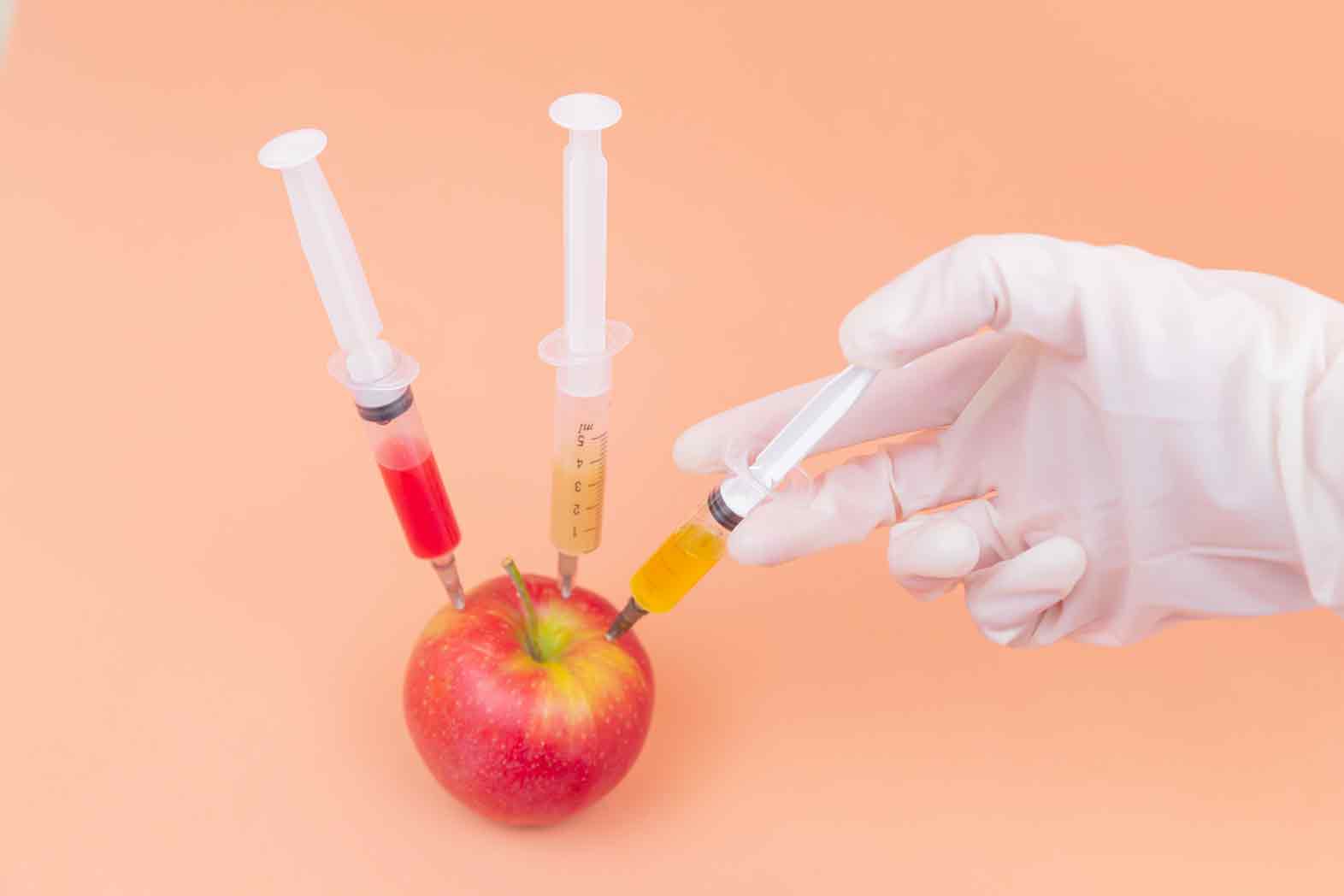
The Problem With Processed Foods
I get lots of questions about why I ’m such a huge niggler for chemical-free foods and why it matters and rather of writing 3,500 words every time I ’m asked, I wrote one 3,500- word blog post.
Surprise, surprise, no bone was reading all that.
That’s okay. I ’m breaking it up into a many corridor that everyone will be suitable to digest sluggishly and duly( pun intended), and hopefully we can explore why healthier, cleaner, more chemical-free food choices are so important. It’s critical that any person embarking on a clean eating trip have an understanding of why the trip is so vital to their success in losing weight.
Consider this part I of the series.
What are reused foods? Allow me to exfoliate some light.
A “ reused food, ” in general, is commodity that has had to endure a process to make it what it’s before it’s turned over to you. nearly everything that comes in a box is reused. nearly everything that comes in a zip- sealed bag is reused. nearly everything that comes from a big giant brand or huge pot or massive plant factory nearly is reused. nearly everything that you buy from a grocery store is reused.
I mean, that includes a lot – that’s all the aisles in the grocery store! You ’d have to gauge the border of the store to avoid that, right?
Let’s look at the history of food in this country over the once one hundred or so times.
nce upon a time, before food was big assiduity( meaning before reused foods) and we were dealing with the fear of shortage, people were much lower. Being fat was a rich person’s dilemma. Why? Because you have to ingest an AWFUL LOT of whole foods( as in, not reused) on a regular base to develop and maintain an fat constitution in that day. So being fat simply did n’t make fiscal sense. effects like chuck , pies, eyefuls, galettes they were rare – could n’t always buy them at the store, so you had to make them at home. largely doubtful that you could or would be suitable to singe sweets every single day for your pleasure.
Because they were concerned about shortage, portions were allotted precisely. They did n’t want to be caught out there not being about to get food, and having little at the house. occasionally, you ’ll hear our elders talk about when whole grains were formerly allotted out to the millions because not only did they need to make sure they had it for the dogfaces, they demanded to make sure the force could cover everyone in the event of exigency.
ADS
To add it up, food was n’t presumed to be generous, and it caused people to scrimp, penny pinch, and exercise portion control.
Now, in comes the drive toward larger food distributors – less concentrate on original, more concentrate on “ getting big. ” “ Get big or get out, ” I believe was the factual line. The US Gov’t actually stressed that they would n’t be suitable to feed everyone without food product going plant, and took every trouble they could to try to get it there. With food product being taken to the manufactories, we were separated more from how our food was made. The farther the process was taken from us, the lower oversight we had in respects to what was in it. We used to have the milkman, right? You made arrangements with a original ranch to have your milk delivered to your door, right? Now, if you drink milk, you ’re buying a gallon that comes from a ranch that you have no knowledge of. You ’re buying from a brand.
I get lots of questions about why I ’m such a huge niggler for chemical-free foods and why it matters and rather of writing 3,500 words every time I ’m asked, I wrote one 3,500- word blog post.
Surprise, surprise, no bone was reading all that.
That’s okay. I ’m breaking it up into a many corridor that everyone will be suitable to digest sluggishly and duly( pun intended), and hopefully we can explore why healthier, cleaner, more chemical-free food choices are so important. It’s critical that any person embarking on a clean eating trip have an understanding of why the trip is so vital to their success in losing weight.
Consider this part III of the series.
So, if the foods are n’t nutritionally deficient, why is this a problem?
Well, how important credit do you give food wisdom? The rule is simply that the foods can not be deficient in nutrients that wisdom recognizes as precious. What about what wisdom has n’t spotted yet? What about all these hyphenated chemicals that wisdom has n’t linked( or is averted from relating) as dangerous to our health?
And before you call me a conspiracy philosopher, consider this it took wisdom decades to fete that trans- fats – formerly a massive part of margarine and other major foods – were dangerous to our health. Believe it or not, the government still allows trans- fats in foods, and actually allows food manufacturers to lie about how important trans- fats are in their foods.( More on that latterly.)
What differently, in these foods, is doing us in? Science does n’t know yet. And really, since utmost of our food wisdom studies are funded by the veritably assiduity they affect do you authentically anticipate wisdom to find out? I ’m not telling you that they ’d designedly fudge figures to present favorable results – trying to remain unprejudiced, then – but I’m telling you it’s easy to divert finances away as in, another study. perhaps indeed a study trying to debunk commodity claiming their products are dangerous.
ADS
That’s not the conspiracy philosopher in me. That’s just smart business on their part anyhow of what it does to the consumer. Keep the consumer far enough down from the exploration, and they ’ll noway know the downfall of buying my product. It just happens that way.
So since this is all cyclical, let’s go back to that vacuity of food thing. Now, all this food( food, mind you, that seeks to NOT be nutritionally deficient although it admits that it is) is available to our families. We, knowing what it’s like to have to worry about food not being available, begin to indulge. Manufactories – and plant jobs – are springing up because diligence are blowing. Longer work hours, both grown-ups in the ménage are now working, and all this super accessible food at hand. We ’re eating what we can, when we can, and eating a lot of it since we ’re enjoying the capability to eat at our discretion, not at the discretion of a portion.
Keep in mind, also, at this time a new generation of children are being born under this new understanding of food. Family tradition might advance to certain dishes being made a certain way, but lots of dishes are being replaced by the magic catholicon in the box. Some of us have that Grandma who insists on cooking everything from scrape. We tend to write her off as crazy or paranoid because “ Times have changed ” and “ No bone has time for all that cuisine, ” or perhaps because “ This is the( insert decade) s, Nana, we do n’t live in the kitchen the way you used to! ” effects that are all true, but come with consequences.
I asked you, dear anthology, to keep in mind the point I made earlier about hyphenated chemical constituents in our food, right? I hope you did. The intriguing loophole in the FDA’s policy about reproduction foods is that there’s veritably little limit to what can now be put INTO food. That’s an important point.
You know how, if you leave food sitting out, it’ll attract canvases ? Why? Because canvases and rodents are attracted to the same effects that our bodies are attracted to in food – nutrients. Ever notice that with ALL the food in a supermarket, there’s infrequently any ants or bugs in the aisles, but you have to swat them down from the tomatoes or kiwi in the yield area? That’s not because every area in the grocery store – except the yield – is scattered down. I can only offer proposition as to why that is. For starters, the reused foods have to be reused to maintain shelf life. They’ve to be suitable to handle being transported to the installation. They’ve to be suitable to repel sitting on a shelf until bought. They’ve to be suitable to repel sitting in your closets until you cook them.
Can you do that with your home made cuisine? I misdoubt it.
Then’s another question What do you suppose they ’re putting in these reused foods to shield off insects and rodents?
Last question Do you suppose it’s a good idea to ingest the same chemicals that are put in food food that flies do n’t indeed want? The same chemicals that help canvases from asking our food, are the same chemicals we ’re ingesting when we eat this stuff anyway. How healthy can that be? Nothing in the world can debunk what feels like sense to me.


